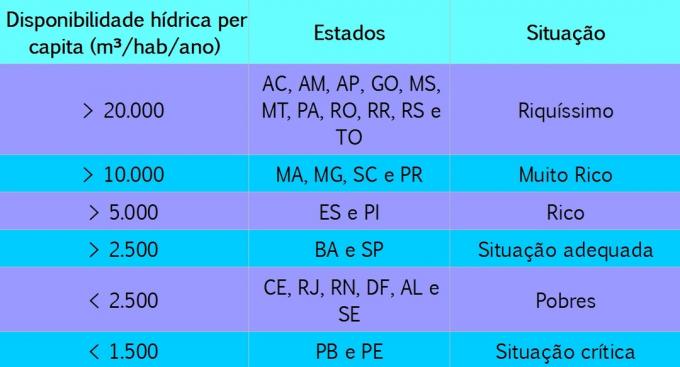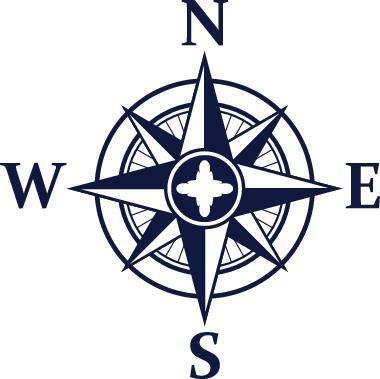Brazil is considered a world economic power when it comes to water availability, considering that the Brazilian territory concentrates about 12% of all water reserves existing in the world. But this does not mean that the country does not or has never experienced water shortages. And the main reason is the issue of water distribution in Brazil and its use.
We can say that water reserves are poorly distributed in the country. The North region is the one with the most availability, while the Northeast and Southeast regions have a number of these reserves, following an order inversely proportional to the number of inhabitants of the respective places in question. Look at the table below:

State water availability in cubic meters per inhabitant in one year
As we can see, the index per capture of water availability, that is, the amount of available water resources in relation to the number of inhabitants, is greater in states belonging to the region North and Midwest of the country (except Rio Grande do Sul), as these areas have a lower population density and hydrographic basins with larger flows. In other places, the availability is less than 20,000 m³ for each inhabitant during the year, reaching levels below 1500 m³ in some places.
Do not stop now... There's more after the advertising ;)
If we observe, on the other hand, consumption versus availability according to regions, as shown in the graph below, we can reach new conclusions regarding this scenario:

Graph of water distribution in Brazil by regions
Therefore, the North region, which concentrates less than 7% of the population, has about 68% of the water reserves of the country, while the Southeast and Northeast, the most populous regions, present only 6% and 3% of reserves, respectively. But this does not mean, of course, that the most water-rich regions are free from a water crisis, given that, in addition to availability, planning, management and infrastructure are needed to guarantee the distribution of this resource to all inhabitants, which is not always the case.
An example of this is the Northeast region itself, as the historical problems related to the drought did not occur in the most populous areas, which are located near the coast, but in the so-called area. drought polygon, where population densities are lower. This tells us that the problem of lack of water is not necessarily related to the amount of inhabitants, but with political and administrative issues that permeate the different spheres government agencies.
By Me. Rodolfo Alves Pena
Would you like to reference this text in a school or academic work? Look:
PENA, Rodolfo F. Alves. "Distribution of water in Brazil"; Brazil School. Available in: https://brasilescola.uol.com.br/geografia/distribuicao-agua-no-brasil.htm. Accessed on June 28, 2021.


